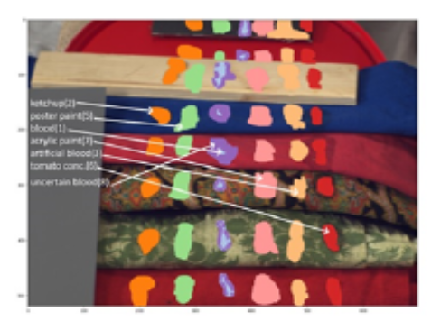


Indian Journal of Science and Technology
DOI: 10.17485/IJST/v16i42.1682
Year: 2023, Volume: 16, Issue: 42, Pages: 3795-3802
Original Article
Tejaskumar B Sheth1*, Milind S Shah2
1Research Scholar, Gujarat Technological University, Gandhinagar, Gujarat, India
2Professor and HOD, EC Department, Shantilal Shah Engineering College, Bhavnagar, Gujarat, India
*Corresponding Author
Email: [email protected]
Received Date:07 July 2023, Accepted Date:30 September 2023, Published Date:13 November 2023
Objectives: To maximize the identification and improve the accuracy of classifying the bloodstain in a hyperspectral image (HSI) at the crime scene, a 3-D discrete wavelet transform (3-D DWT) Dense CNN deep learning model is proposed in this work. Methods: This work proposes the use of a 3-D DWT to pre-process HSI data to effectively extract both spatial and spectral information while maintaining robust feature representation capabilities. Then, 3-D CNN that integrates dense connections attaches great importance to the reuse of features for classification. The experiment was carried out with the initial training/testing ratio set to 10/90 of the data samples, and we compared the results with four different state-of-the-art CNN architectures. Findings: The experimental results show that the 3-D DWT Dense CNN deep learning model achieves 97% classification accuracy, smoother classification maps, and more discriminable features for hyperspectral image classification. Novelty and Application: This work provides a deep learning 3D dense CNN model with the 3-D DWT and achieves improved identification of bloodstains at a messy crime scene. The proposed model requires a smaller number of trainable parameters, less computational power, so it can be used in the field of forensic science, where substance classification at the scene is important.
Keywords: Hyperspectral Imaging, Blood Strain Classification, Discrete Wavelet Transform (DWT), 3D CNN, Dense Connection, Forensic Science
© 2023 Sheth & Shah. This is an open-access article distributed under the terms of the Creative Commons Attribution License, which permits unrestricted use, distribution, and reproduction in any medium, provided the original author and source are credited. Published By Indian Society for Education and Environment (iSee)
Subscribe now for latest articles and news.